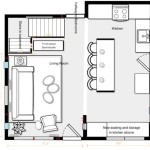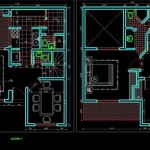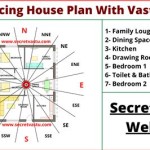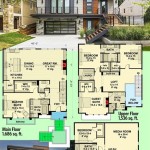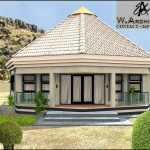Cozy Mountain Home Plans: Design Considerations for Serene Living
Mountain home plans represent a distinct architectural genre characterized by designs that harmonize with the natural landscape and prioritize comfortable living in often challenging environmental conditions. These plans typically emphasize rustic aesthetics, durable construction, and features that maximize scenic views while providing protection from the elements. Understanding the key considerations involved in selecting or designing a cozy mountain home plan is crucial for achieving a residence that is both aesthetically pleasing and functionally effective.
The concept of "cozy" within the context of mountain home plans extends beyond mere comfort. It encompasses a feeling of warmth, security, and connection to the surrounding environment. This is often achieved through the use of natural materials, thoughtful space planning, and incorporating elements that foster a sense of tranquility. The selection of a suitable plan is therefore a multifaceted process that requires careful evaluation of various factors.
Key Point 1: Site Selection and Orientation for Mountain Home Plans
The foundation of any successful mountain home design lies in the careful selection and examination of the building site. The topography, climate, and surrounding vegetation all play a significant role in determining the optimal design and orientation of the home. A thorough site analysis is essential to identify potential challenges and opportunities that can inform the architectural design.
Topography, or the physical features of the land, directly impacts the type of foundation required and the overall footprint of the home. Steep slopes may necessitate specialized foundation techniques such as stepped foundations or retaining walls, adding to the construction costs. Conversely, a relatively flat site offers more flexibility in design and construction. Analyzing the soil composition is also crucial, as it affects the stability of the foundation and the suitability of the land for landscaping.
Climate considerations are equally important. Mountain regions are typically characterized by colder temperatures, heavy snowfall, and strong winds. The orientation of the home should maximize solar gain during the winter months to reduce heating costs. Overhangs and strategically placed windows can help regulate the amount of sunlight entering the home, preventing overheating in the summer. In areas prone to heavy snowfall, the roof design must be able to withstand significant loads, and considerations should be given to snow removal strategies.
The surrounding vegetation can also influence the design. Trees can provide shade and wind protection, but they can also pose a fire hazard. Careful planning is necessary to maintain a defensible space around the home and to select fire-resistant building materials. Landscaping should complement the natural environment and minimize the need for extensive maintenance.
Proper site orientation also plays a crucial role in maximizing views. Locating the main living areas and bedrooms to face the most desirable views can enhance the living experience and increase the value of the home. However, it’s important to balance the desire for views with the need for privacy and protection from the elements.
Key Point 2: Architectural Style and Material Choices for Mountain Homes
Mountain home plans frequently incorporate architectural styles that reflect a connection to the natural environment and the area's history. Rustic designs are prevalent, often featuring exposed timber framing, stone accents, and natural wood siding. However, other styles, such as contemporary and craftsman, can also be adapted to suit the mountain setting. The choice of architectural style should be guided by personal preferences, the surrounding landscape, and any local building codes or design guidelines.
The selection of materials is critical for both aesthetics and durability. Natural materials like wood, stone, and metal are commonly used in mountain home construction. These materials not only blend seamlessly with the environment but also offer excellent weather resistance. Wood siding, for example, can be treated to resist rot and insect damage, while stone veneer can provide a durable and attractive exterior finish. Metal roofing is another popular choice due to its longevity and ability to withstand heavy snow loads.
Inside the home, natural materials continue to play a prominent role in creating a cozy and inviting atmosphere. Wood floors, exposed beams, and stone fireplaces are common features in mountain home designs. These elements add warmth and character to the interior spaces, creating a sense of connection to the outdoors. The use of natural light is also essential. Large windows and skylights can bring ample light into the home, reducing the need for artificial lighting and enhancing the connection to the surrounding landscape.
Energy efficiency is a key consideration when selecting materials. Insulated windows and doors, along with high-quality insulation in the walls and roof, can significantly reduce energy consumption and lower utility bills. Sustainable materials, such as reclaimed wood and recycled content products, are also gaining popularity as homeowners seek to minimize their environmental impact.
When choosing materials, it’s crucial to consider the long-term maintenance requirements. Materials that require minimal upkeep can save time and money over the lifespan of the home. Thorough research and careful planning are essential to ensure that the chosen materials are both aesthetically pleasing and practical for the mountain environment.
Key Point 3: Interior Planning and Functional Elements in Cozy Mountain Homes
The interior layout of a mountain home should prioritize functionality and comfort. Open floor plans are common, allowing for easy flow between living spaces and maximizing views. A well-designed kitchen is essential, often incorporating a large island or breakfast bar for gathering and entertaining. The living room should be a cozy and inviting space, typically featuring a fireplace as a focal point. Bedrooms should be designed to provide privacy and relaxation, with ample closet space and comfortable furnishings.
Functional elements are also critical for mountain living. A mudroom or entryway is essential for storing outdoor gear and preventing dirt and snow from being tracked into the home. A laundry room should be conveniently located and equipped with efficient appliances. Adequate storage space is crucial for storing seasonal items and outdoor equipment. A well-designed garage or carport can provide shelter for vehicles and protect them from the elements.
Fireplaces are often a central feature in mountain homes, providing warmth and ambiance during the colder months. A wood-burning fireplace can be a charming addition, but it’s essential to ensure that it is properly installed and maintained to prevent fire hazards. Gas fireplaces offer a more convenient and efficient alternative, and they can be easily controlled with a thermostat.
Accessibility is another important consideration, particularly for homeowners who plan to age in place. Wide doorways, ramps, and accessible bathrooms can make the home more comfortable and functional for people with mobility limitations. Universal design principles can be incorporated into the design to ensure that the home is accessible to people of all ages and abilities.
Finally, the interior design should reflect the homeowner's personal style and preferences. Incorporating personal touches, such as artwork, family heirlooms, and favorite colors, can create a space that feels truly like home. A well-designed interior should be both functional and aesthetically pleasing, creating a comfortable and inviting environment for mountain living.
Ultimately, the success of a cozy mountain home plan hinges on a well-integrated design that addresses site-specific conditions, embraces appropriate architectural styles, and incorporates functional elements that enhance the living experience. Careful planning and attention to detail are essential for creating a mountain home that is both beautiful and practical.

Camp Home Plan By Natural Element Homes

Small Mountain House Plans Houseplans Blog Com

Plan 11527kn Cozy Mountain House Plans Log Home

Cozy Cabin Retreat 2 Bed Bath

Small Mountain House Plans Houseplans Blog Com

3 Story Open Mountain House Floor Plan Asheville

Cozy Winter Cabins A Frame House Plans And More Houseplans Blog Com

Mountain Home Floor Plans We Love Blog Eplans Com

9 Mountain Home Architecture Trends For 2024 Kga

Houzz Tour Eclectic Mountain Modern Decor In A Cozy Cabin


